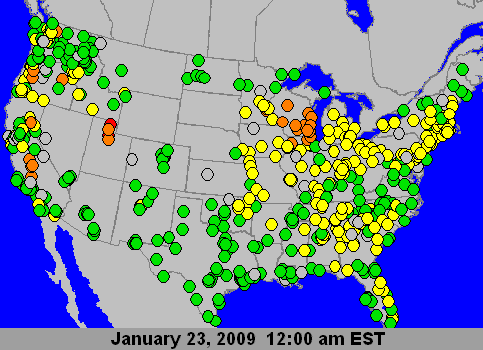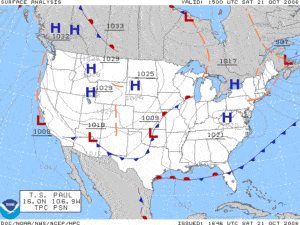If the coronavirus pandemic has taught us one thing, it is we have it within us to change behavior to effect a positive outcome. Probably the most emblematic example is cleaner air as a byproduct of reduced travel that is directly connected and attributed to shelter-in-place/self-isolation procedures.
We are regularly made aware through the media and through other sources of predictions regarding the numbers of infections and/or deaths attributed to COVID-19 as it relates to some future point in time. For example, it was just recently announced that the number of lives lost in the United States could surpass the 200,000 mark by the end of the month. That number stands at over 150,000 today.
Of course, the reality could be way different – the numbers could be higher or lower – depending on actual conditions on the ground – such things as a natural disaster in the form of a hurricane could have a huge influencing effect.
All of which serves as a good introduction as it relates to the science of weather forecasting.
Weather forecasting is anything but an exact science. That said, in California’s San Joaquin Valley, weather is very predictable, meaning such, with rare exception, has been pretty consistent over the years – it really doesn’t change that much one year to the next. Some winters may be wetter while others may be drier. Some summers may be drier with others being less so, and so on and so forth.
What has helped make weather predicting more reliable is satellite-supplied data, so much so that it is not uncommon for forecasting to be extended out to cover a period of time up to 10 days from the time said forecast is made with a pretty high degree of accuracy, in probably most cases.
At least, that’s the way it is now.
But, this could all change as the planet warms up – the presumption here being it will continue on this course. A warmer Earth has led to warmer seas and a change in oceanic dynamics and physical properties such as a change in sea level – water expands when the temperature increases. And warming also allows for increased evaporation which could lead to increased precipitation. So water dynamics could as well change; some of that change we’re likely already experiencing.
The 10-day weather forecasting could have implications for forecasting air quality. Currently this does not extend past one or two days as far as I know. At least in my area it doesn’t.
But, what if it did; how great would that be?! Think about the possibilities. A 10-day air quality forecast with a high degree of accuracy could have the potential to help people affected make better planning decisions in regards to planned daily activities. It could mean that one decides to use public transit on a day or days when one would otherwise drive, like on a day when pollution in air might be high. When you only get a report on what air quality is projected to be for the following day on the evening before, that information may be insufficient time to switch plans ahead of time.
It’s kind of akin to pre-planning as it has to do with a hurricane, for instance. The farther in advance the warning is, the more time there is to properly prepare for evacuation procedures. Such could make a world of difference when it comes to saving lives – and does!

Ah, but one may be thinking long-term air-quality forecasting – how dependable could that be?! In the San Joaquin Valley, summertime and wintertime inversions hold pollutants close to the ground where people breathe. If air stagnates, pollution builds. Air stagnation is consistent with high atmospheric pressure. And this is affected by the jet stream. The jet stream influences weather and the weather influences air quality typically. And, if circumstances on the ground – meaning, in this instance, day-to-day life – stays fairly consistent, then predicting air quality condition well in advance shouldn’t be all that difficult. I mean, think about it!
Okay, now the thinking might be if it were that straightforward, we’d have at our disposal that apparatus. Something to work toward then? You bet!
A contemplative point: There seemed to be concern about the astronauts leaving the space station when they did. Were they about to put themselves unnecessarily in harm’s way, encountering turbulent, unstable weather upon presumed planned Atlantic Ocean landing? Well, wasn’t that the plan?
Fortunately the space explorers had a Plan-B which was a Gulf of Mexico splash-down. And, that’s exactly what happened.
A 10-day air quality forecast would no doubt give all those paying attention advance information to put into motion a Plan-B if need be. Having that kind of advantage would be beneficial – and I hope welcome – indeed!
How prescient would that be? Very!

Images: National Oceanic and Atmospheric Administration (upper and middle); U.S. EPA and partners (lower)
– Alan Kandel


